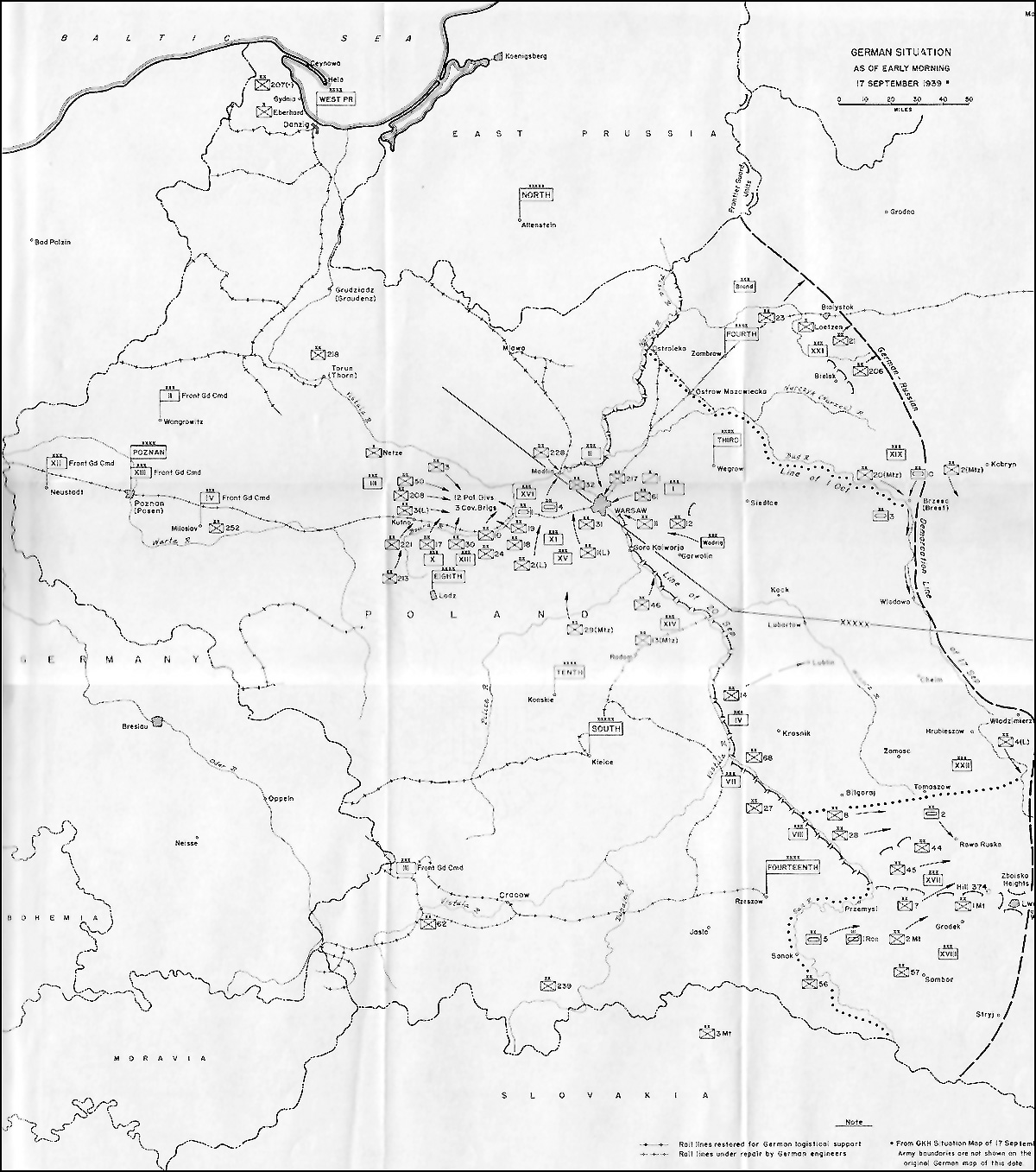
A key to the map symbols is on my profile.

A key to the map symbols is on my profile.
You might be able to re-cycle this article, with a new date, in the near future!
Hah - Moscow announced it was remaining neutral!!
How much longer till they invade Finland, Estonia, Lithuania,and Latvia?
And TODAY is the day that Obama sells out the Poles to the Russians! Almost as if he wants to demoralize them.

This is from The German Campaign In Poland (1939) by Robert M. Kennedy - United States Army
Army Group North was informed of the Red Army's movement into eastern Poland by OKH early on 17 September, and was directed to remain west of the line along the Bug River-Brzesc-Bialystok. Units of the XXI Corps in the Bialystok area and a motorized division of XIX Corps in the Brzesc region had already advanced east of this line. These units were to be permitted to remain east of the line long enough to complete their missions, after which they were to withdraw. The plan to send armored and motorized infantry columns to Slonim and Kowela was abandoned. Despite the OKH order to confine its operations to the area west of the Bug-Brzesc-Bialystok line, Army Group North instructed its air reconnaissance units to continue flying missions to Grodno and other points deep enough to provide security for the army group. [See map 10.]
The second phase of operations by Army Group North was completed with the intervention of the Red Army. All organized resistance in the area between Warsaw and Brzesc had ended, and Army Group North had established contact with Army Group South across the Vistula at Gora Kalwarja. Farther east advance Panzer units of XIX Corps had established radio contact with Panzer elements of Rundstedt's force and only a few miles separated the armored spearheads of the two German army groups. Prisoners taken on 16 and 17 September represented half the identified Polish divisions and almost one-third of the cavalry brigades, and their statements indicated complete despair on the part of the remnants of the Polish Army.
Relations with the Russians suffered several setbacks at the outset in the Army Group North area. Russian aircraft bombed a bridge nine miles west of Bialystok on 17 September, killing three German soldiers and several Labor Service men. Other Russian air attacks inflicted casualties on advance units of XIX Corps east of the Bug.
Warsaw presented a special problem with the intervention of the Russians. The capital was held by a large garrison, reinforced by the units that had escaped encirclement in the battles farther west, and a large part of the heavy artillery required for an assault on Warsaw's defenses was committed at Modlin, the fortress city a short distance down the Vistula. The bulk of the army group's armor was far to the east at Brzesc, and Hitler was unwilling to accept the heavy casualties an infantry assault on Warsaw would cost. However, the Fuehrer was anxious to gain possession of the city before the arrival of the Russians, to impress the Red Army and prevent the formation of a Communist puppet government in the Polish capital.
To weaken the determination of the population of Warsaw to resist, a leaflet drop over the city had been made on 15 September, urging noncombatants to leave and promising fair treatment and the release of the garrison as soon as the formalities of surrender were completed. The Germans had to take into account the matter of foreign public opinion about the lives of noncombatants and the large diplomatic colony still inside Warsaw. The United States Congress was soon to convene in special session, and the Congress of American States had called on its members to meet. The killing of large numbers of civilians and disregard of accepted custom in repatriating diplomatic representatives would win the German Government no friends in either congress. The United States arms embargo was still in force, prohibiting the sale of weapons and munitions to the Allies, and the attitude of the American states toward the German attack was still undeclared.

Map 10 - German Situation Map as of Early 17 September 1939
The opening scene in Wajda’s “Katyn” says it all.
Poles were evacuating Eastward to escape the Germans only to find their compatriots heading towards them and alerting them that the Soviets have invaded, so they in turn reverse their course and head back westward.
Kind of like trying to decide whether to jump from a burning building.
80th Anniversary Bump